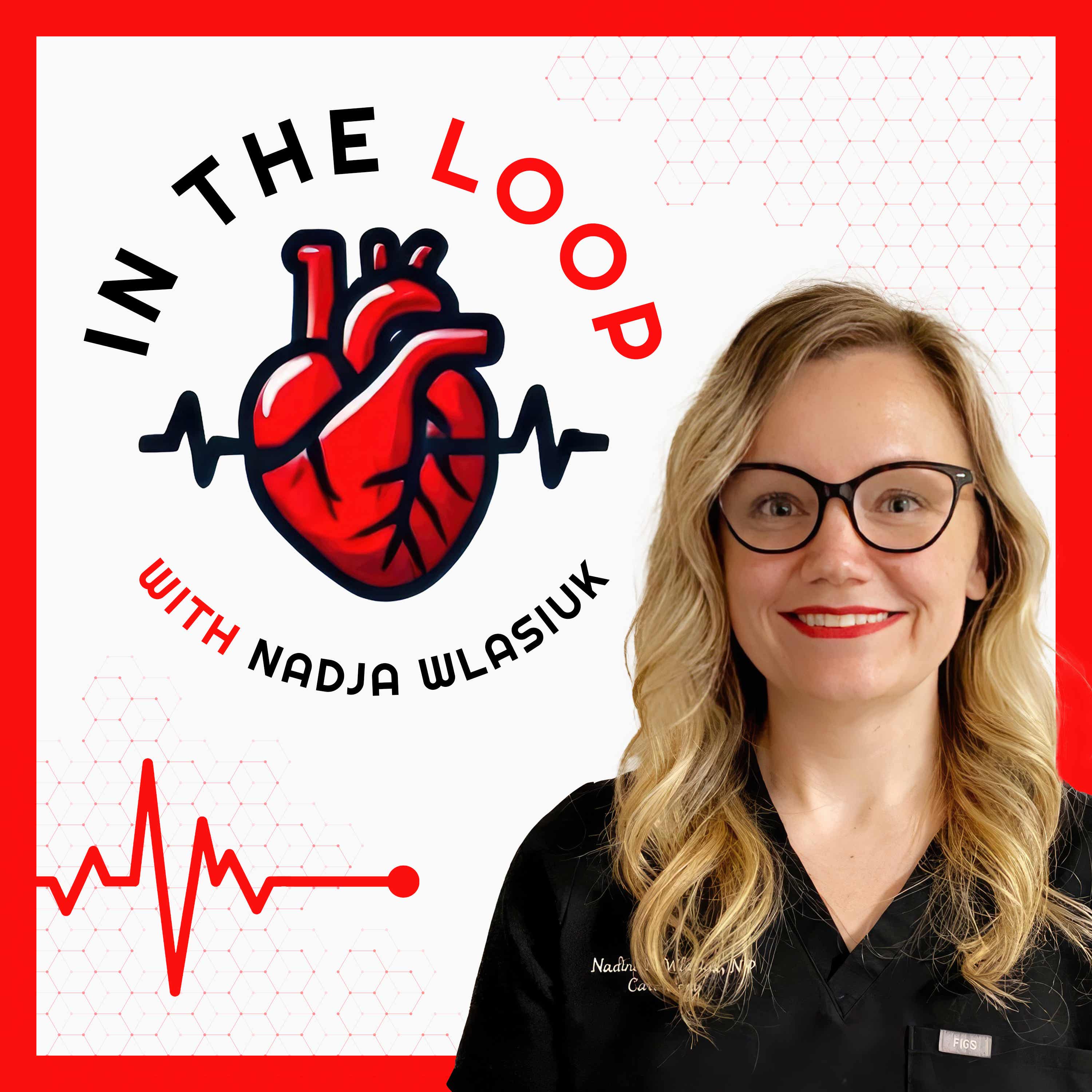In the Loop with Nadja Wlasiuk

In the Loop with Nadja Wlasiuk
Podcast Description
Information and education surrounding the world of healthcare for the novice, the nurse, and the nerd hosted by a board certified nurse practitioner. intheloopwithnadja.substack.com
Podcast Insights
Content Themes
Explores the intricacies of healthcare, particularly in cardiology and electrophysiology, with specific episodes discussing topics like atrial fibrillation's detection using smart devices and groundbreaking procedures in cardiac care. Themes include patient care innovations, cardiovascular health technologies, and the personal stories of notable figures in medicine.

Information and education surrounding the world of healthcare for the novice, the nurse, and the nerd hosted by a board certified nurse practitioner.
Welcome back to In the Loop with Nadja Wlasiuk.
Today’s episode is deeply personal. My guests are my oldest daughter, Lydia, and her partner, Nick, a 35-year-old musician with the rock-and-roll (very bluesy) band Honey Hounds, who was recently diagnosed with a very rare and aggressive cancer (sinonasal teratocarcinosarcoma).
What started as a stubborn sinus infection quickly became something far more serious. Together, we talk about how easily symptoms can be minimized or dismissed, what it’s like to fight for answers, and the emotional and practical realities of navigating a rare diagnosis that has brought them all the way from their home in Jacksonville, Florida to New York City for treatment.
As a nurse practitioner, this conversation really made me pause. It reminded me how quickly we can default to “routine” thinking, and how crucial it is that we listen, we really listen, to what our patients are telling us. Sometimes the details that sound minor to us are the signals that change everything.
This episode isn’t just about medicine; it’s about persistence, partnership, and hope. It’s about the power of love and advocacy when life changes overnight.
If you’d like to help support Nick’s care, you’ll find links in the show notes to his GoFundMe and to Honey Hounds on Spotify. Every stream, share, and donation truly helps as they navigate life between Jacksonville and New York for treatment.
I’m grateful to Lydia and Nick for their honesty and courage in sharing their story. Let’s get in the loop.
Honey Hounds on Spotify:
Nick and Lydia visiting San Francisco
Sinonasal Teratocarcinosarcoma
Sinonasal Teratocarcinosarcoma, a Rare Tumor Involving Both the Nasal Cavity and the Cranial Cavity: https://pmc.ncbi.nlm.nih.gov/articles/PMC7221467/
The neurosurgical management of sinonasal malignancies involving the anterior skull base: a 28-year experience at The MD Anderson Cancer Center: https://thejns.org/view/journals/j-neurosurg/136/6/article-p1583.xml
Sinonasal Teratocarcinosarcoma of the Head and Neck A Report of 10 Patients Treated at a Single Institution and Comparison With Reported Series: https://jamanetwork.com/journals/jamaotolaryngology/fullarticle/408675
Treatment of Sinonasal Teratocarcinosarcoma: A Systematic Review and Survival Analysis: https://pmc.ncbi.nlm.nih.gov/articles/PMC8258305/
Memorial Sloan Kettering Cancer Center
https://www.youtube.com/@mskcc
Head and Neck Cancers: https://www.mskcc.org/cancer-care/types/head-neck?utm_source=chatgpt.com
Skull Base Tumors: https://www.mskcc.org/cancer-care/types/skull-base-tumors?utm_source=chatgpt.com
Clinical Communication: Recognizing and Addressing Symptom Dismissal
Patients’ Perceptions of Health Care Providers’ Dismissive Communication:
https://pubmed.ncbi.nlm.nih.gov/34344222/
When Doctors Dismiss Symptoms, Patients Suffer Lasting Harm:
“The study offers guidance for healthcare providers facing diagnostic uncertainty. Bontempo recommends that clinicians validate patients’ experiences regardless of whether they can diagnose them.
“I don’t recommend reassurance about it ‘probably being nothing serious’ to patients who have a lot of distress about their symptoms,” Bontempo said. “Patients appreciate clinicians communicating their uncertainty and admitting they don’t know something.””
Medical gaslighting tops list of highest patient safety risks:
Nick and Lydia serenading us after Thanksgiving Dinner 2024 with Valerie (originally written by the Zutons and popularized by Amy Winehouse):
Produced by: Nadja Wlasiuk, DNP, APRN, FNP-BC
Get full access to In the Loop with Nadja Wlasiuk at intheloopwithnadja.substack.com/subscribe

Disclaimer
This podcast’s information is provided for general reference and was obtained from publicly accessible sources. The Podcast Collaborative neither produces nor verifies the content, accuracy, or suitability of this podcast. Views and opinions belong solely to the podcast creators and guests.
For a complete disclaimer, please see our Full Disclaimer on the archive page. The Podcast Collaborative bears no responsibility for the podcast’s themes, language, or overall content. Listener discretion is advised. Read our Terms of Use and Privacy Policy for more details.